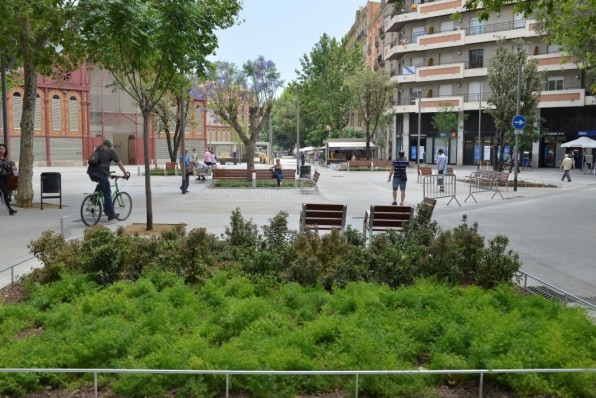
“We want Barcelona to be a sustainable city, to be a livable city,” Janet Sanz, the city’s deputy mayor for ecology, urbanism, and mobility said in a recent interview. “And we understand that today in our public spaces, we have a lot of social and community activities, but they are dominated by private transportation, both moving cars and parked cars.”
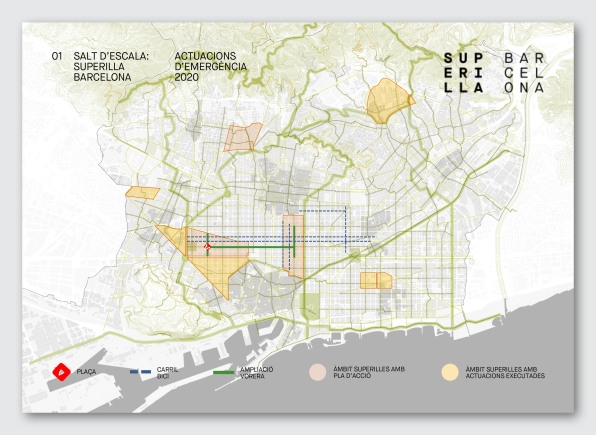
The new plan, which will be implemented over the next 10 years and cost an estimated $44 million, is a variation on the city’s “superblock” concept, a design that limits traffic inside a nine-block grid, allowing cars to drive freely only around the perimeter.
“Sixty percent of public space is actually used by cars, so the whole idea behind the superblock is to take space away from the cars and give it back to people,” says Mark Nieuwenhuijsen, a research professor in environmental epidemiology at the Barcelona Institute of Global Health who has modeled the health impacts of superblocks. The original idea, from urban planner Salvador Rueda, aimed to reduce pollution and noise, make people more physically active, and increase green space, which can also help reduce the urban heat island effect—the fact that large swaths of concrete make cities even hotter during heat waves.
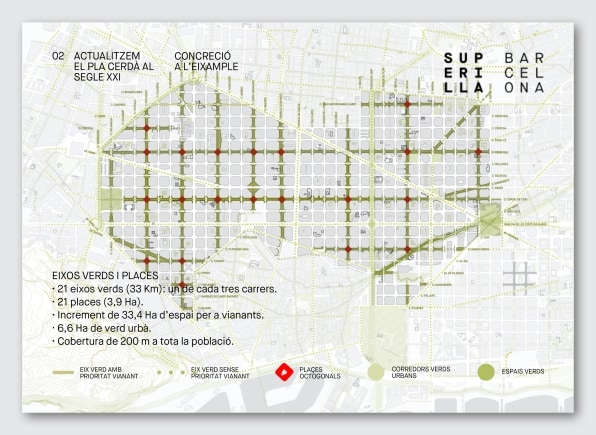
In 2016, the city created a superblock in a neighborhood called Poblenou, following two earlier conversions. (Depending on how you define a superblock, there are actually six in place now, and as many as 11 planned for the near future.) Nieuwenhuijsen’s research suggests that if superblocks were created at the scale that Rueda envisioned—with 500 across Barcelona—it would improve health enough to prevent 700 premature deaths in the city each year.
This latest plan is a watered-down version of a superblock, Nieuwenhuijsen says, since it doesn’t limit traffic in the whole area it covers. That’s likely because it was more politically feasible. “There’s often a lot of resistance trying to reduce car use in Barcelona,” he says. Retail store owners often believe that pedestrianizing streets will reduce sales, though the opposite is actually true. But even the smaller changes can help improve the area.
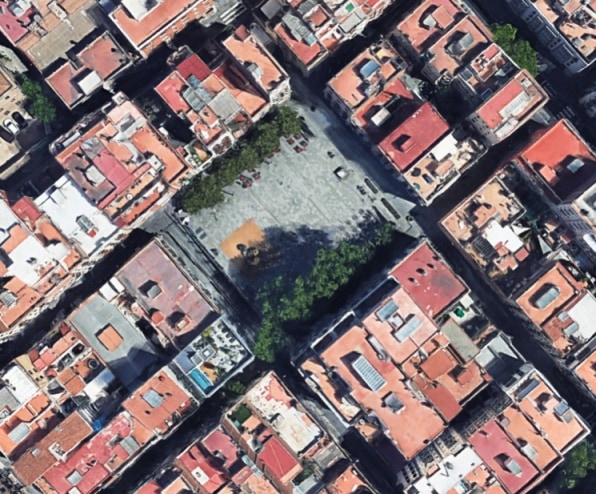
The Eixample district, the neighborhood that will be redesigned in the new plan, was designed to have large green spaces, though developers ignored the original intent and filled in those areas with apartments and other buildings. By eliminating through traffic and many parking spaces on 21 streets, and adding bike lanes, playgrounds, and green spaces, the plan will help give residents the health benefits of having nearby parks, facilitate walking and biking, and make it quieter, less polluted, and cooler on hot days.
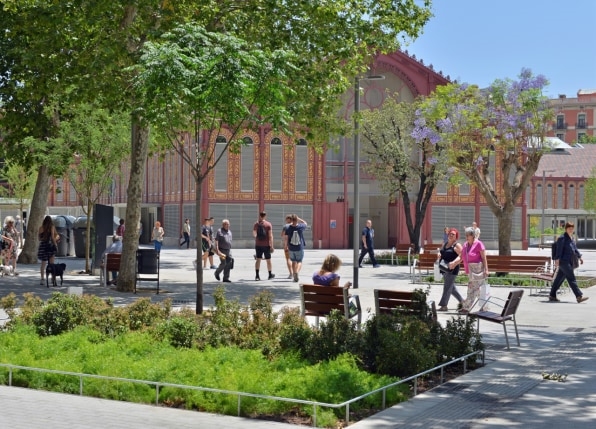
It’s something that should be greatly expanded, Nieuwenhuijsen says. The coming shift to electric cars in cities isn’t a full solution from a health perspective, since a big chunk of the pollution from cars comes from tires, not just tailpipes. Cars also make people less active and require roads and parking spaces that take away green space. Additionally, car accidents are a major cause of deaths globally. In a compact city like Barcelona, it makes sense to prioritize other forms of transportation—and to figure out better ways to help people commute from the suburbs to work, or to create new working hubs in their own neighborhoods.
The new plan doesn’t go that far, but it’s a positive step.
(44)